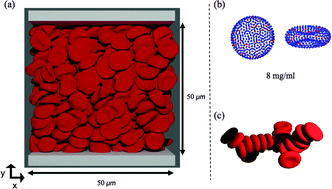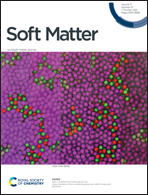Hemorheology: the critical role of flow type in blood viscosity measurements
Abstract
The crucial role of the hemorheological characteristics of blood in a range of diagnoses, treatments and drug delivery mechanisms is widely accepted. Nonetheless, the literature on blood rheology remains inconclusive and sometimes even contradictory. This is in part due to natural variance of blood samples from one study to another, but also stems from fundamental differences in the consequences of the choice of rheometric flow employed. Here, and using a detailed and accurate computational scheme, we thoroughly study the role of flow type in measurement of blood viscosity. Performing these in silico measurements, we isolate the role of flow type and geometry at different hematocrit levels. We show that flow curves obtained in pressure-driven flows relevant to laminar circulatory flows deviate greatly from ones obtained in drag flow at the same hematocrit level. Our numerical platform also allows for the yield stress to be measured under quiescent conditions and without imposing any flow for different hematocrits. We discuss the scaling of the yield stress with the hematocrit level, and show that the differences in pressure vs. drag flows stem from the Red Blood Cell (RBC) orientation at different flow rates as well as the existence of a cell free layer close to the walls.



 Please wait while we load your content...
Please wait while we load your content...